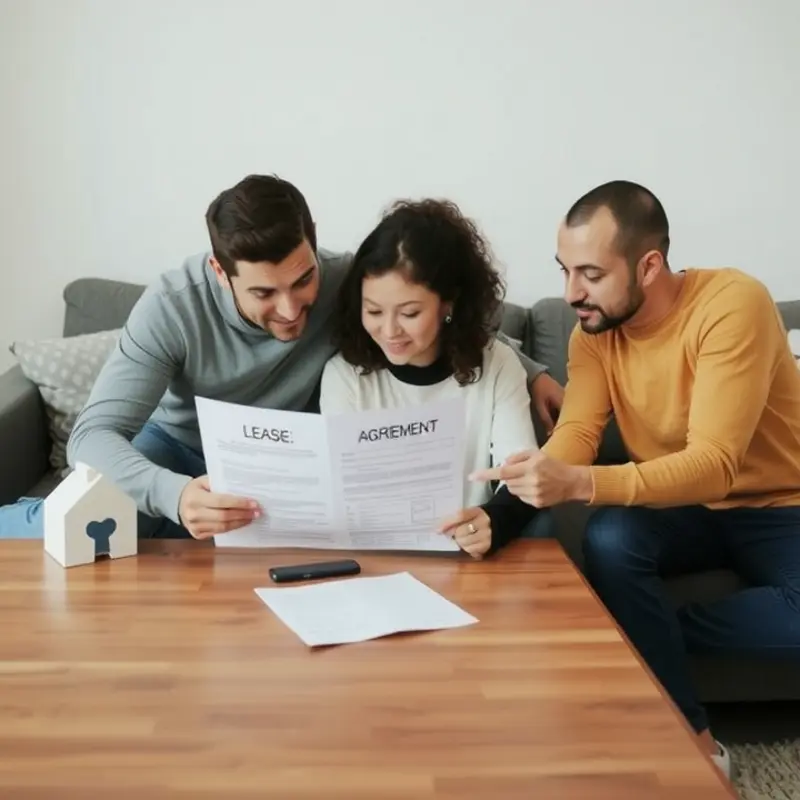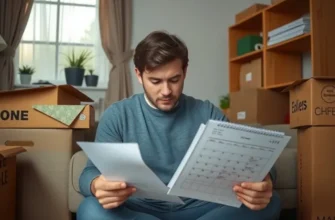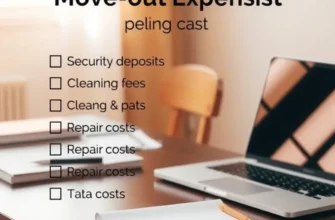Renting a home often comes with a mix of excitement and uncertainty, especially for young professionals, students, and families diving into the world of leases for the first time. Understanding your landlord’s obligations can create a solid foundation for your rental experience and ensure that both parties are on the same page. From maintenance responsibilities to ensuring a safe environment, knowing these obligations not only helps you as a tenant but also empowers you to advocate for your rights. It’s essential to grasp what to expect from your landlord, as well as what is expected from you as a renter. This knowledge can help ease the stress associated with renting for the first time and set you on the path to a successful, harmonious living situation.
Key Responsibilities of Landlords Must Know

Landlords across the United States have a set of obligations aimed at ensuring the safety and well-being of their tenants. These responsibilities not only safeguard renters’ experiences but also maintain the integrity and habitability of the property. Key among these duties is property maintenance, where landlords must ensure that the rental home meets all health and safety codes. This typically involves regular inspections and timely repairs of any structural issues, plumbing, or electrical faults. A failure in these areas could lead to hazardous living conditions.
Additionally, landlords are required to provide safe and habitable environments, free from pests and mold. They should also ensure the property is structurally sound and maintain common areas, if any, in good condition. For tenants, recognizing signs of neglect, such as persistent plumbing leaks or defective smoke detectors, can prompt necessary actions and dialogue with landlords to address these issues.
Another critical responsibility is upholding safety regulations. Landlords must install functional smoke detectors and may be required, depending on state law, to provide carbon monoxide detectors. In many states, they must remove lead paint hazards and comply with local residential building codes. Furthermore, landlords should supply essential services like heating and air conditioning, especially in extreme weather conditions, to protect tenants’ health and safety.
Security is another area where landlords have obligations. They must ensure the doors have functional locks and windows can be securely shut. This duty ensures tenants feel safe in their homes, reducing the risk of break-ins and enhancing the overall living experience.
Local nuances can affect these obligations. For example, in states like California, landlords must adhere to the “warranty of habitability,” which includes not only the maintenance of the property but also ensuring it is fit for occupation by normal standards. On the other hand, states like Florida emphasize swift responses to repair requests during certain periods of tenancy.
If landlords fail to meet any of these responsibilities, renters have several courses of action. Initially, it’s advisable to address concerns directly with the landlord, documenting all communications. If this proves unfruitful, tenants might consider withholding rent, moving out without penalty, or seeking repairs and deducting costs from the rent if permitted by local laws. Legal advice, specifically tailored to the renter’s state laws, can provide clarity and enforce rights when necessary.
For those navigating the intricacies of what landlords are obligated to do, understanding nuances between states can seem daunting. The variability means that renters should become informed about local legislation and remain proactive in discussing their rights with landlords. For further reading on ensuring safety and proper maintenance during challenging weather conditions, consider visiting Winter Apartment Maintenance. This knowledge helps tenants advocate effectively for maintaining their homes while building a healthy landlord-tenant relationship.
Your Rights and How to Assert Them

Understanding your rights as a renter is not merely a protective measure; it’s a cornerstone for enjoying your living space to the fullest. Knowing what to expect from your landlord begins with two fundamental rights: the right to safe housing and the right to privacy.
As a tenant, the right to a habitable living environment is non-negotiable. This means your landlord is obligated to ensure basic safety and livability standards, including functioning plumbing, heating, safe wiring, and no pest infestations. Recognize that these are not luxuries but legally upheld standards that must be met. If you find your apartment falling short of these requirements, it’s essential to document these deficiencies immediately. Taking photographs or videos and maintaining a record of all communications with your landlord can fortify your position should you need to escalate the matter.
Your right to privacy is equally crucial. Landlords may not intrude into your space at will. Typically, they must provide notice before entering your apartment, usually at least 24 hours in advance, though local laws may vary slightly. Exceptions are made in cases of emergency, but such instances should be the exception rather than the norm. If you feel your privacy is being infringed upon, address the issue directly with your landlord, citing the relevant laws if necessary.
In the face of ineffective communication with your landlord, persistent record-keeping is your ally. Always use written communications like emails or certified letters to ensure there is a trace of your attempts to rectify situations. If these efforts fail, you may consider reaching out to local tenant advocacy groups, who can offer guidance and support.
Encountering unsafe living conditions requires prompt action. Initially, provide written notice to your landlord, detailing the issues and requesting repairs. If the response is inadequate, you may report the problem to the local housing authority or similar governmental body tasked with ensuring compliance with housing standards. They can provide more structured intervention.
To effectively assert your rights, knowing where to seek assistance is crucial. Each state has resources available, including legal aid societies that offer free or low-cost legal services for tenants. Moreover, tenant unions or associations can offer support by rallying communal action, providing education on laws, and ensuring landlord accountability.
To round out your understanding of rental dynamics, exploring articles such as those on security deposit deductions can provide further insight into financial protections as a renter.
Taking proactive steps and understanding your rights prevents situations where you’re left feeling powerless. By standing firm and prepared, you create a living environment that respects both your safety and dignity.
Final words
Awareness of landlord obligations and tenant rights is a powerful tool for anyone renting in the U.S. By familiarizing yourself with these responsibilities and standing firm in your rights, you can foster a positive relationship with your landlord while ensuring that your living environment is safe and welcoming. Whether you’re a student, a young professional, or a family, you deserve a rental experience that respects your needs and expectations. Feel empowered to communicate clearly with your landlord and seek assistance whenever necessary—after all, leasing should be a collaborative journey.









